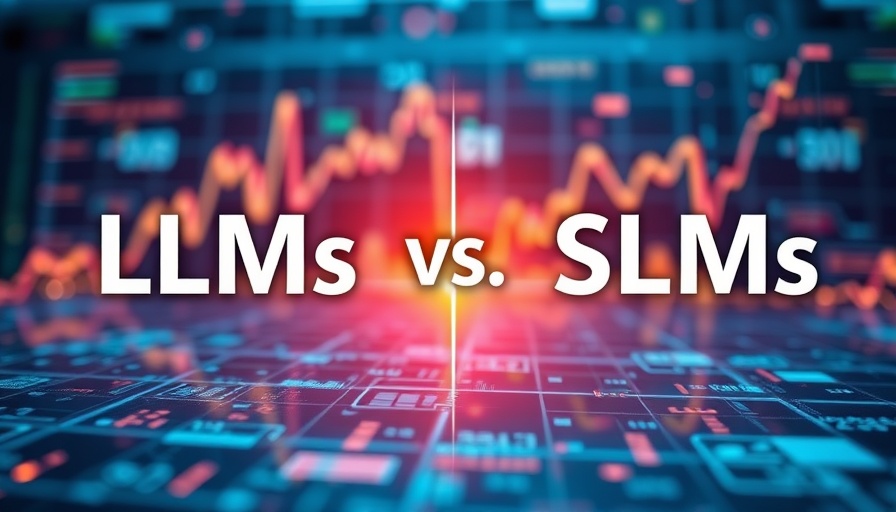
Understanding the Different Dimensions of Language Models
In today’s fast-evolving digital landscape, the choice between Large Language Models (LLMs) and Small Language Models (SLMs) is crucial for financial institutions, especially for small and medium-sized enterprises (SMEs). These decision-making tools can significantly influence efficiency, cost management, and compliance with regulatory standards. Choosing the right model is not simply a technical question; it’s a strategic one that requires a thorough understanding of both options.
What Are LLMs and SLMs?
LLMs, boasting parameters over 30 billion, are powerful tools often utilized through APIs, capable of handling complex tasks such as multi-step reasoning and data synthesis. Conversely, SLMs, ranging from 1 to 15 billion parameters, are generally open-weight or proprietary models ideal for specific applications like structured information extraction and customer service, often referred to as ‘SLM-first’ strategies.
The Regulatory Landscape: Navigating Compliance for SMEs
In the financial sector, regulatory compliance is a priority. Regulations such as the EU AI Act and standards from the Federal Reserve in the U.S. require institutions to uphold strict governance when using any AI model. Financial institutions must have robust documentation and monitoring processes in place, irrespective of whether they choose LLMs or SLMs. As of August 2025, all firms in the EU will need to meet these stringent requirements concerning AI, especially when it pertains to sensitive applications like credit scoring.
Cost vs. Performance: Finding the Right Balance
Cost efficiency is another major factor that companies must assess. While LLMs provide extensive capabilities, they also come with higher costs associated with their implementation and maintenance. In contrast, SLMs often offer more accessible solutions with sufficient performance metrics for routine tasks such as customer interaction. SMEs should evaluate their specific use cases, considering factors like latency, budget, and the complexity of their required tasks.
Real-World Applications: How Can These Models Help Your Business?
For SMEs, leveraging AI isn’t just about adopting the latest technology; it’s about practical applications that enhance operational efficiency. For instance, SLMs can streamline customer service processes with chatbots that provide personalized assistance without incurring significant costs. On the other hand, LLMs can be advantageous when complex scenarios arise, such as market analysis or investment strategy development.
Looking Ahead: Predictions for the Future of AI in Finance
As we approach 2025, it’s anticipated that advancements in AI will lead to further integration of LLMs and SLMs across the financial landscape. The trend is likely to shift towards hybrid solutions that leverage the strengths of both models, providing SMEs with diversified strategies while maintaining a keen focus on compliance and security.
The Emotional Impact of Adopting AI Tools
Integrating AI into business processes can be a daunting endeavor, especially for SMEs. There might be apprehensions about the technology’s complexity and its effects on employment within organizations. However, it allows owners to free up time and resources, enabling them to focus on strategic growth. Embracing AI isn’t just about technology; it’s about carving a future where businesses can thrive by utilizing intelligent solutions.
Final Thoughts: The Path Forward for SMEs in Finance
In conclusion, selecting between LLMs and SLMs involves assessing regulatory compliance, performance expectations, and cost factors. As SMEs navigate this AI landscape, it is essential to approach these decisions with an informed strategy, focusing not only on the potential efficiencies gained but also on the human aspects of financial services. Those who take action today will set themselves on a promising path for tomorrow.
 Add Row
Add Row  Add
Add 



Write A Comment